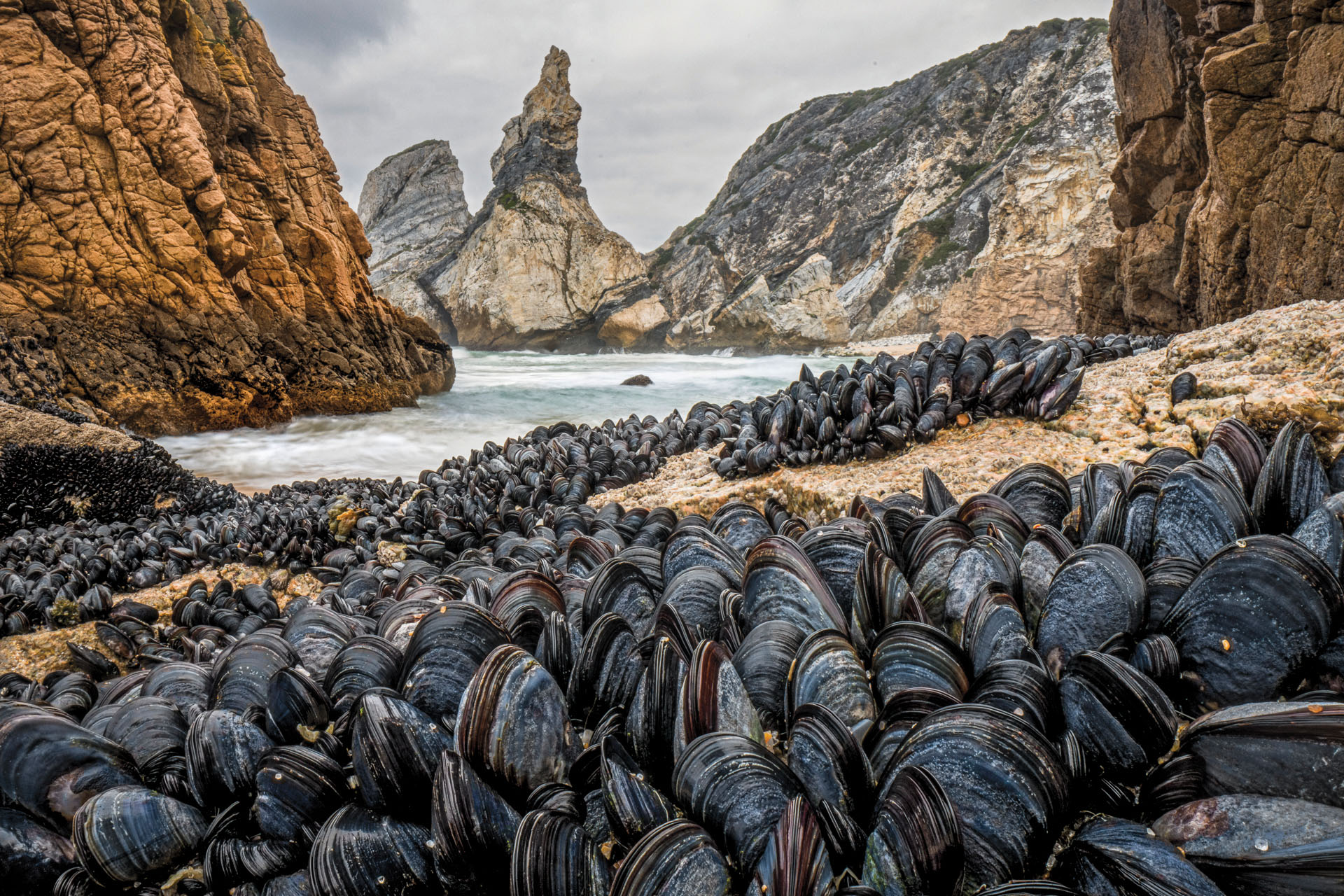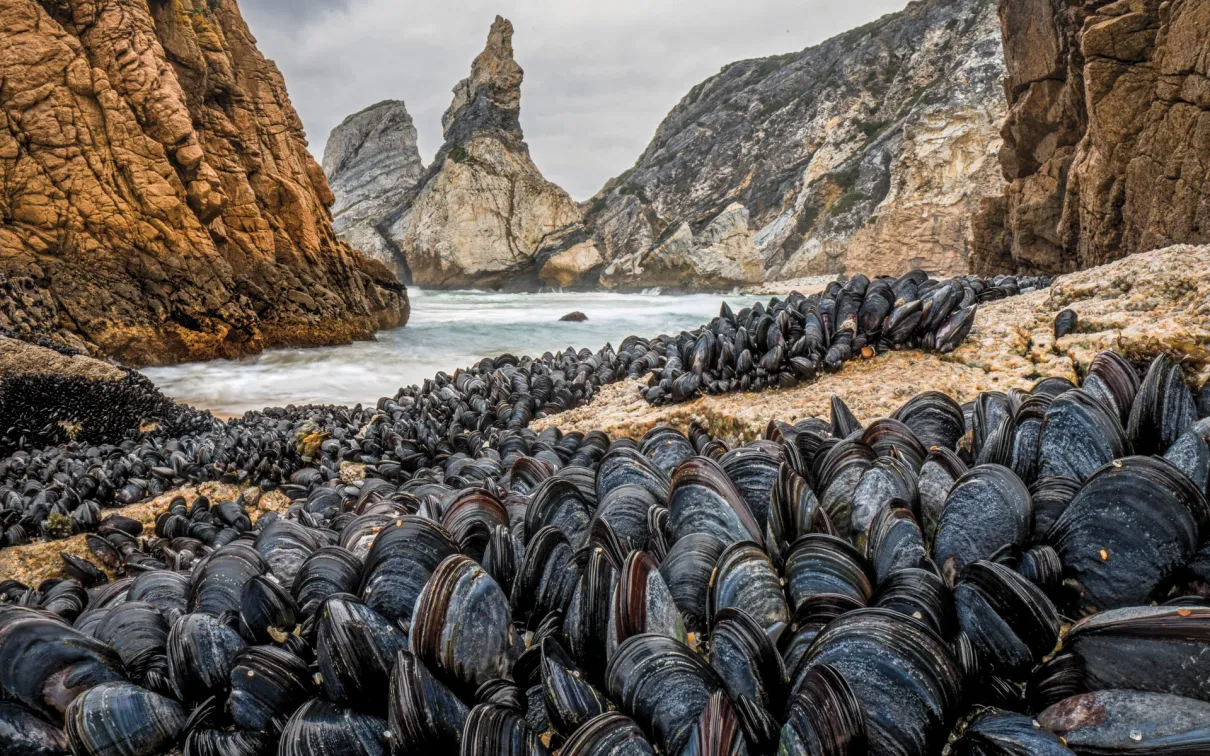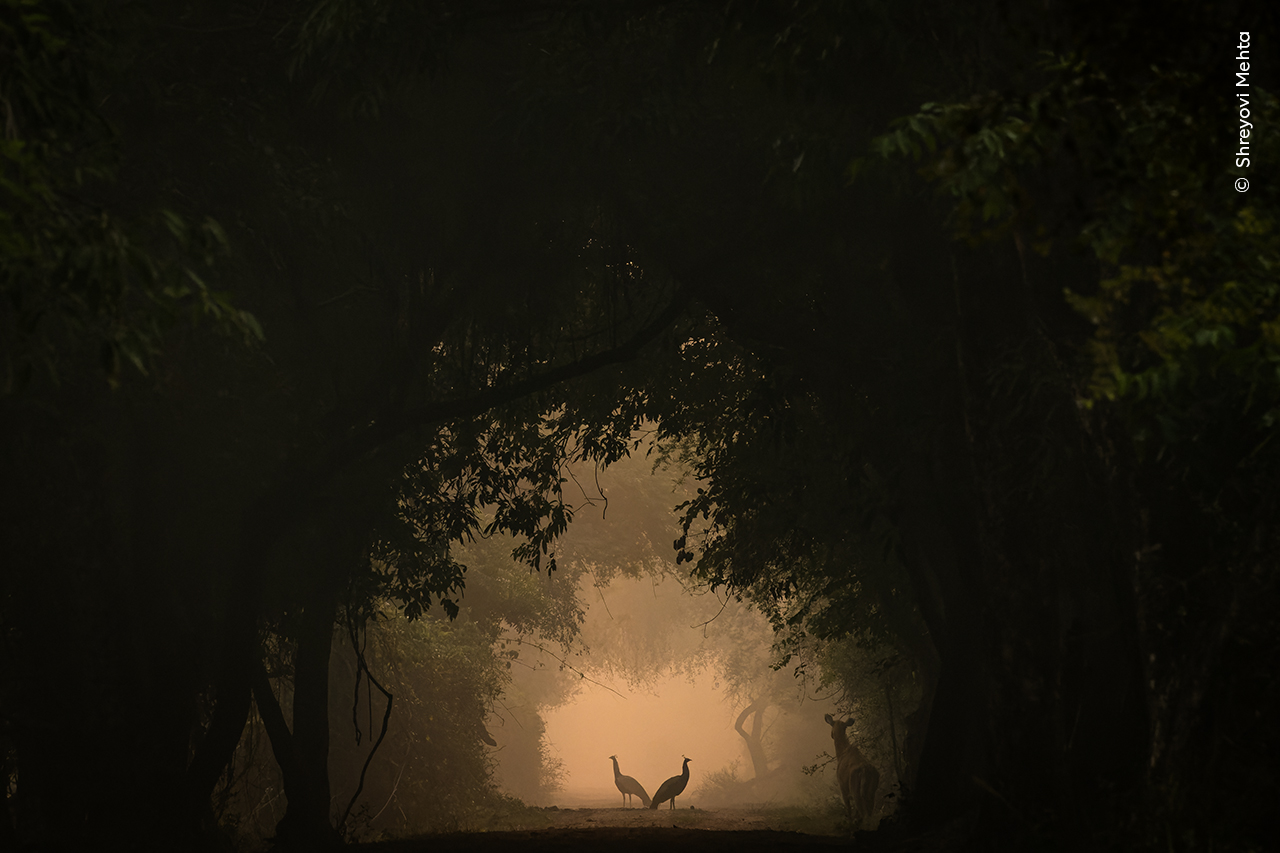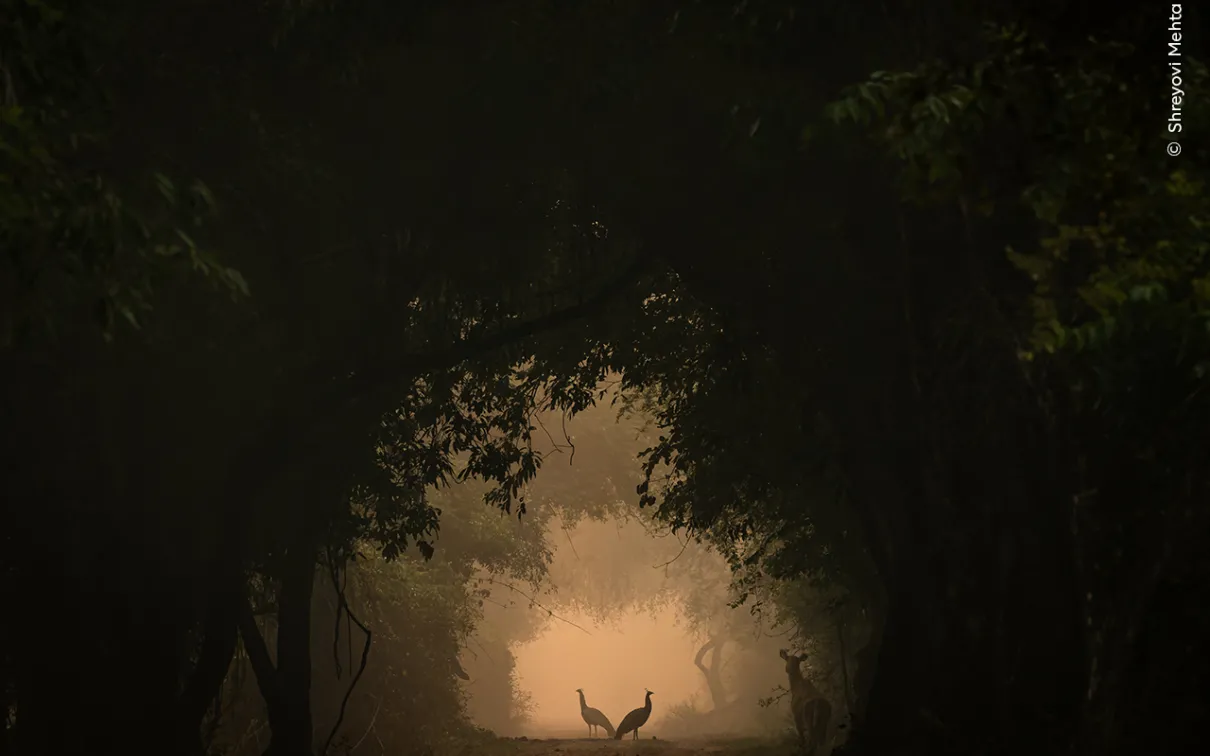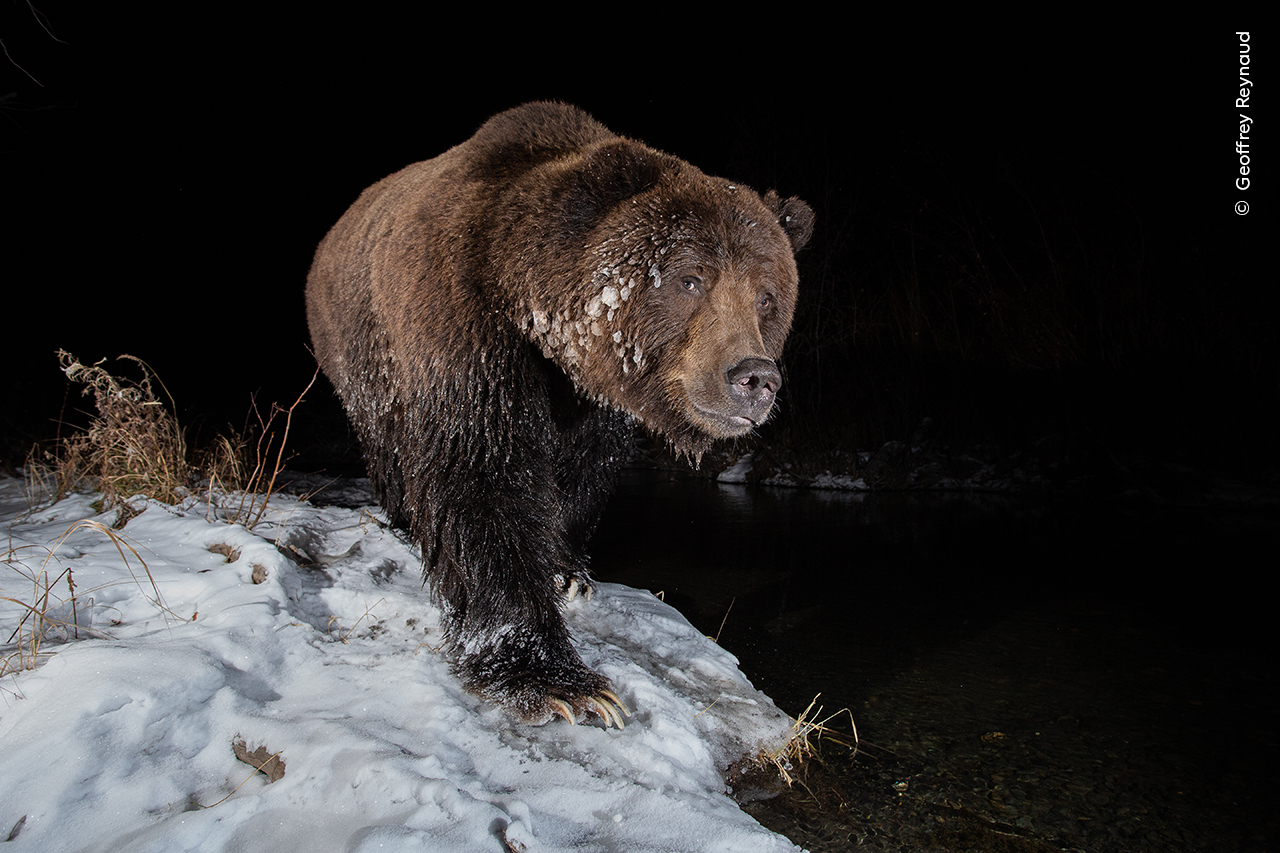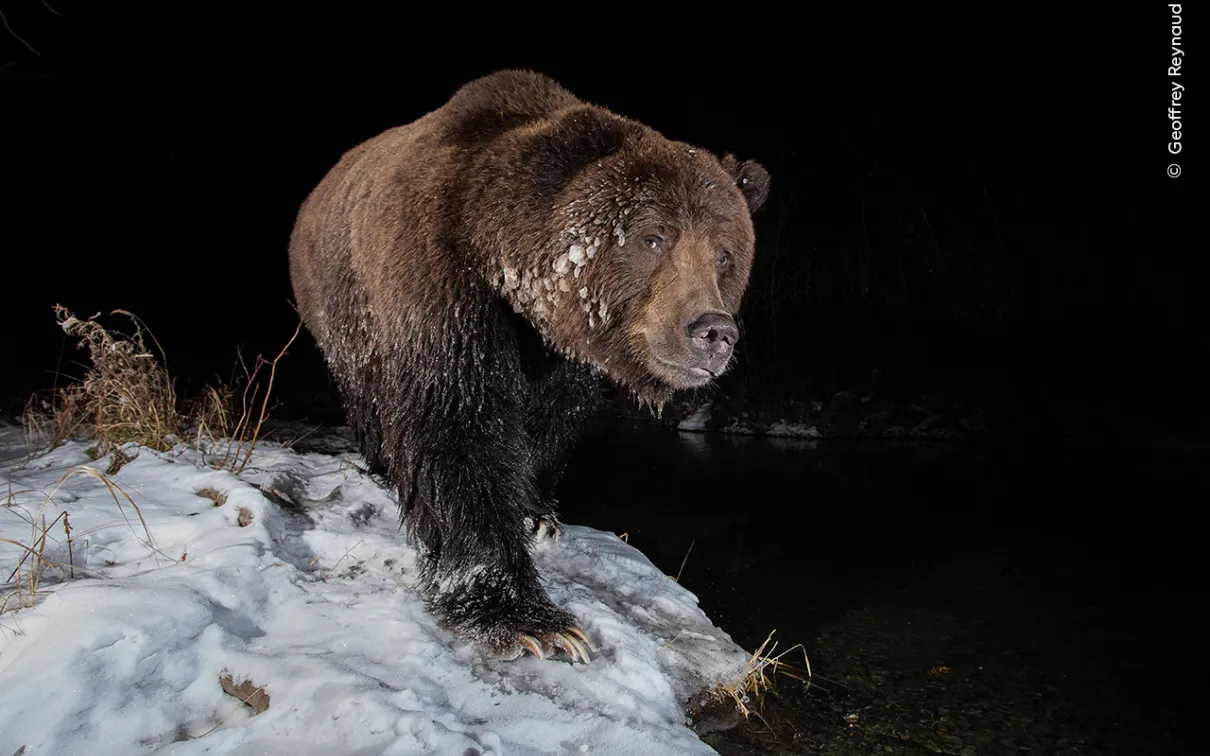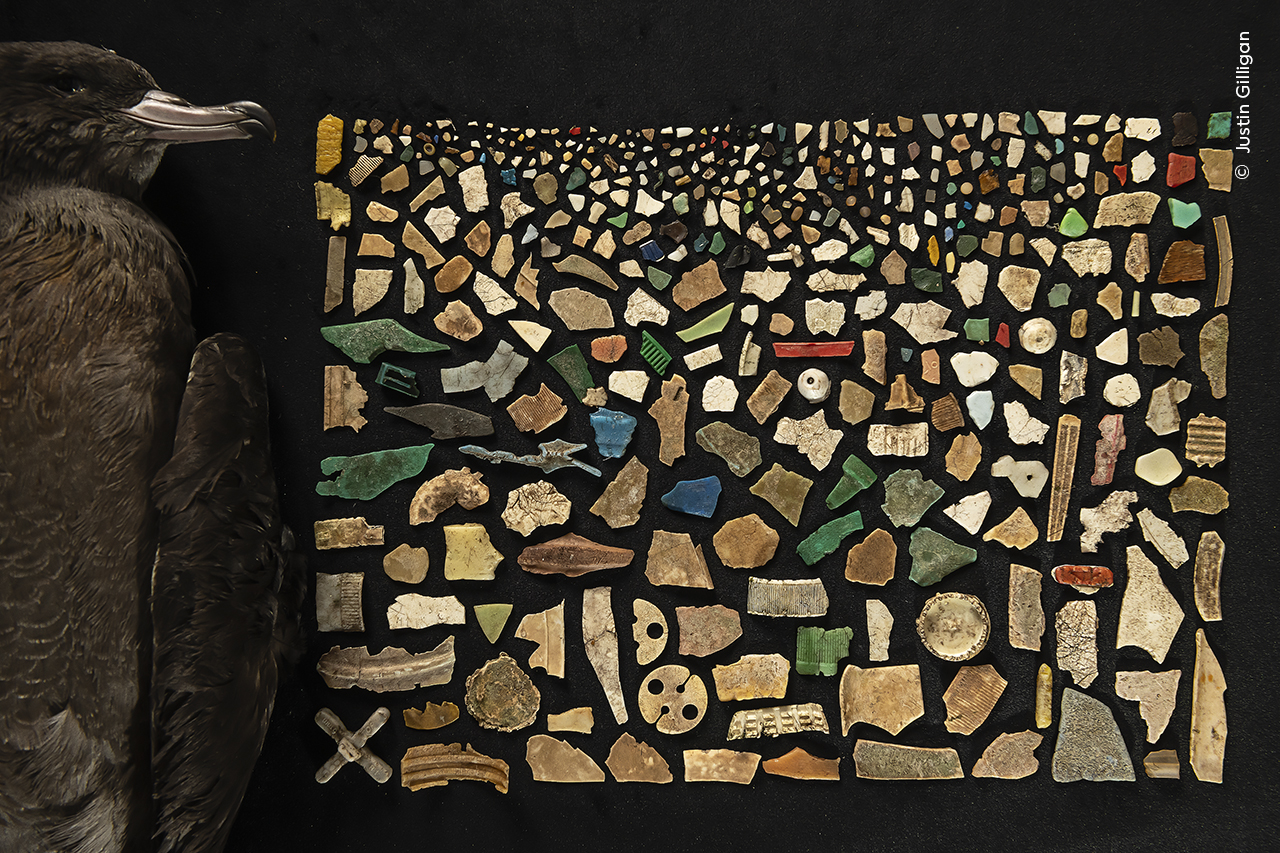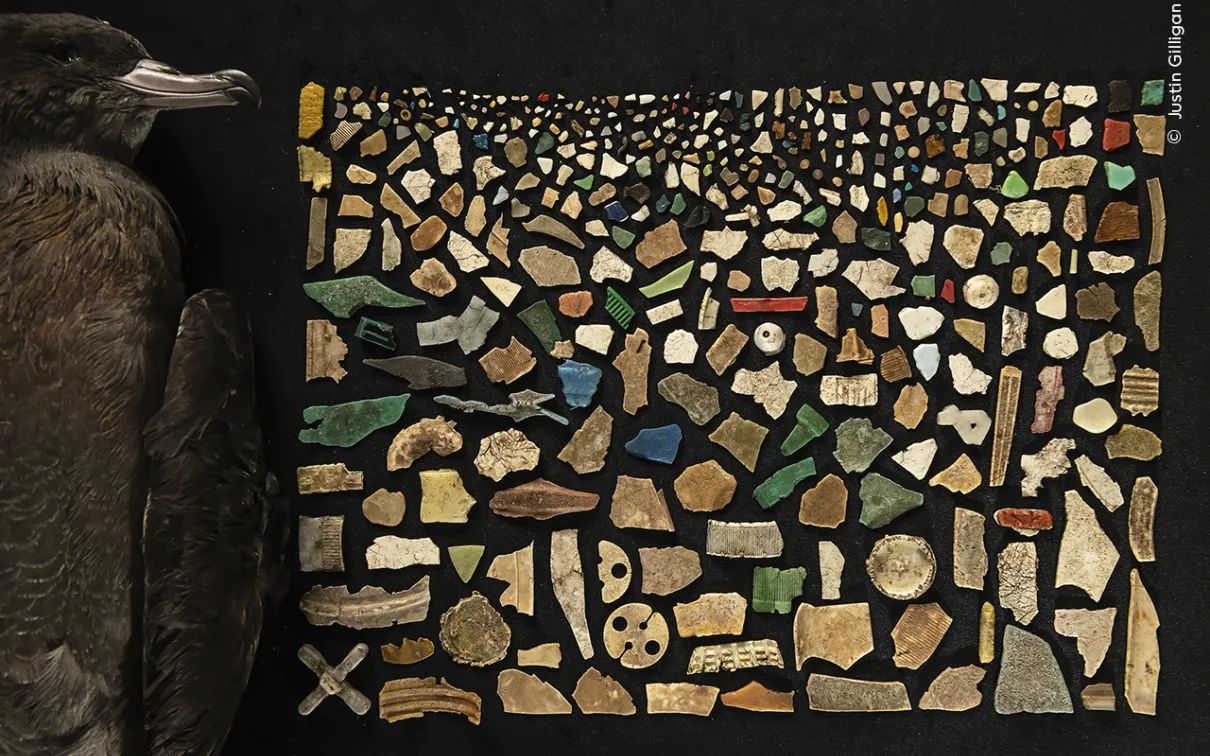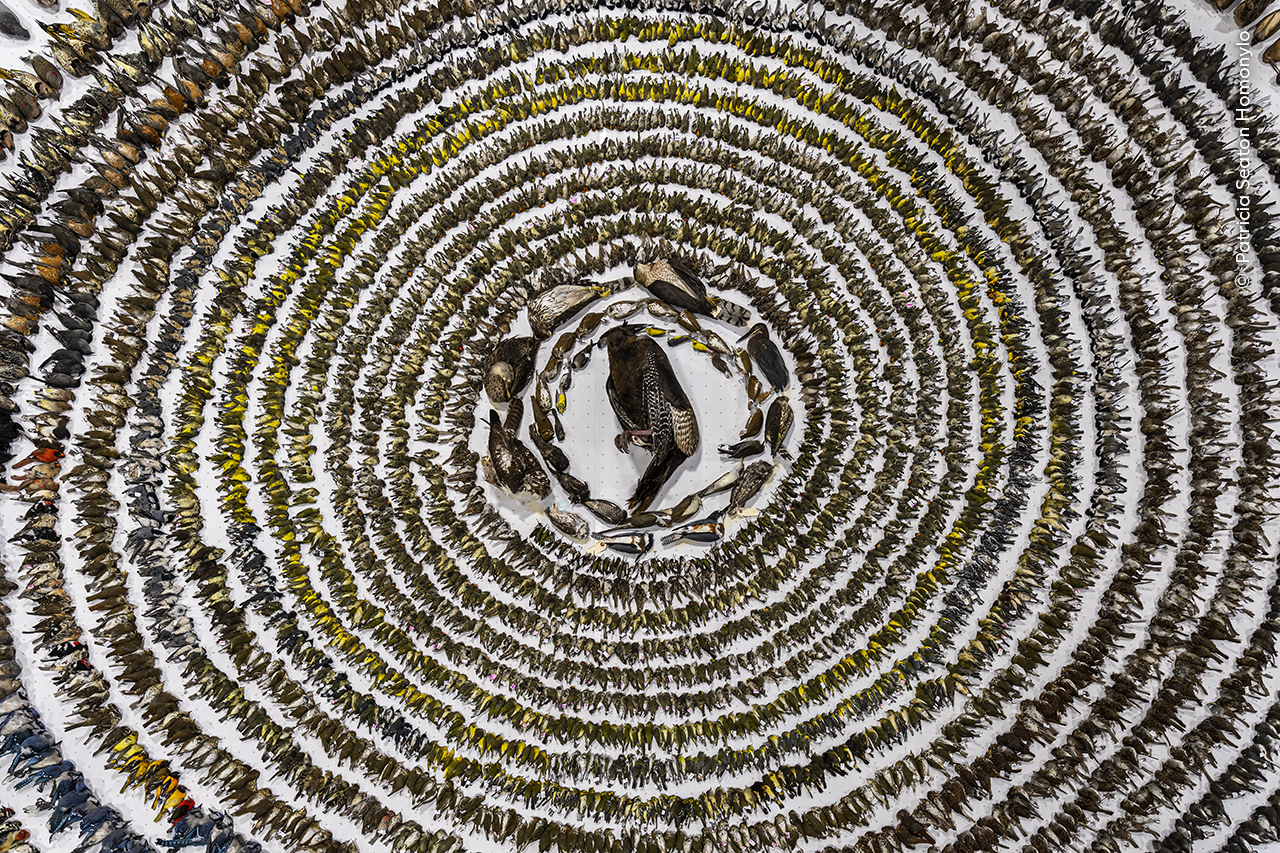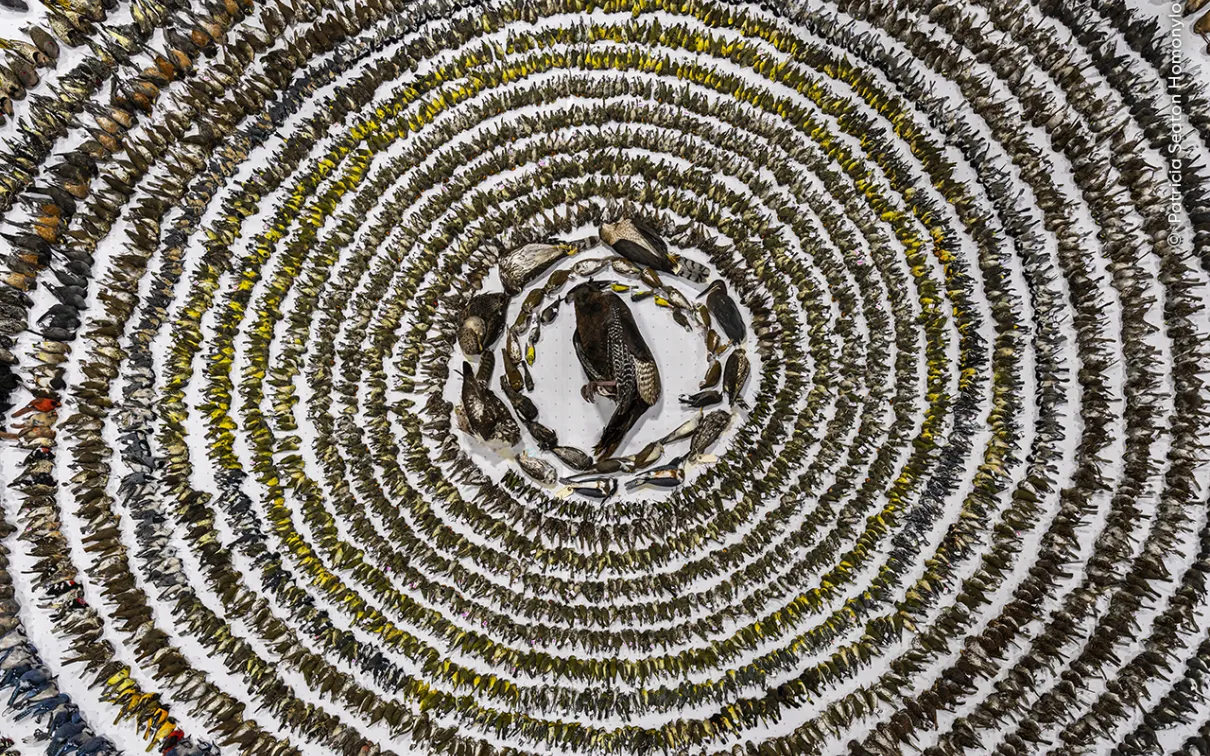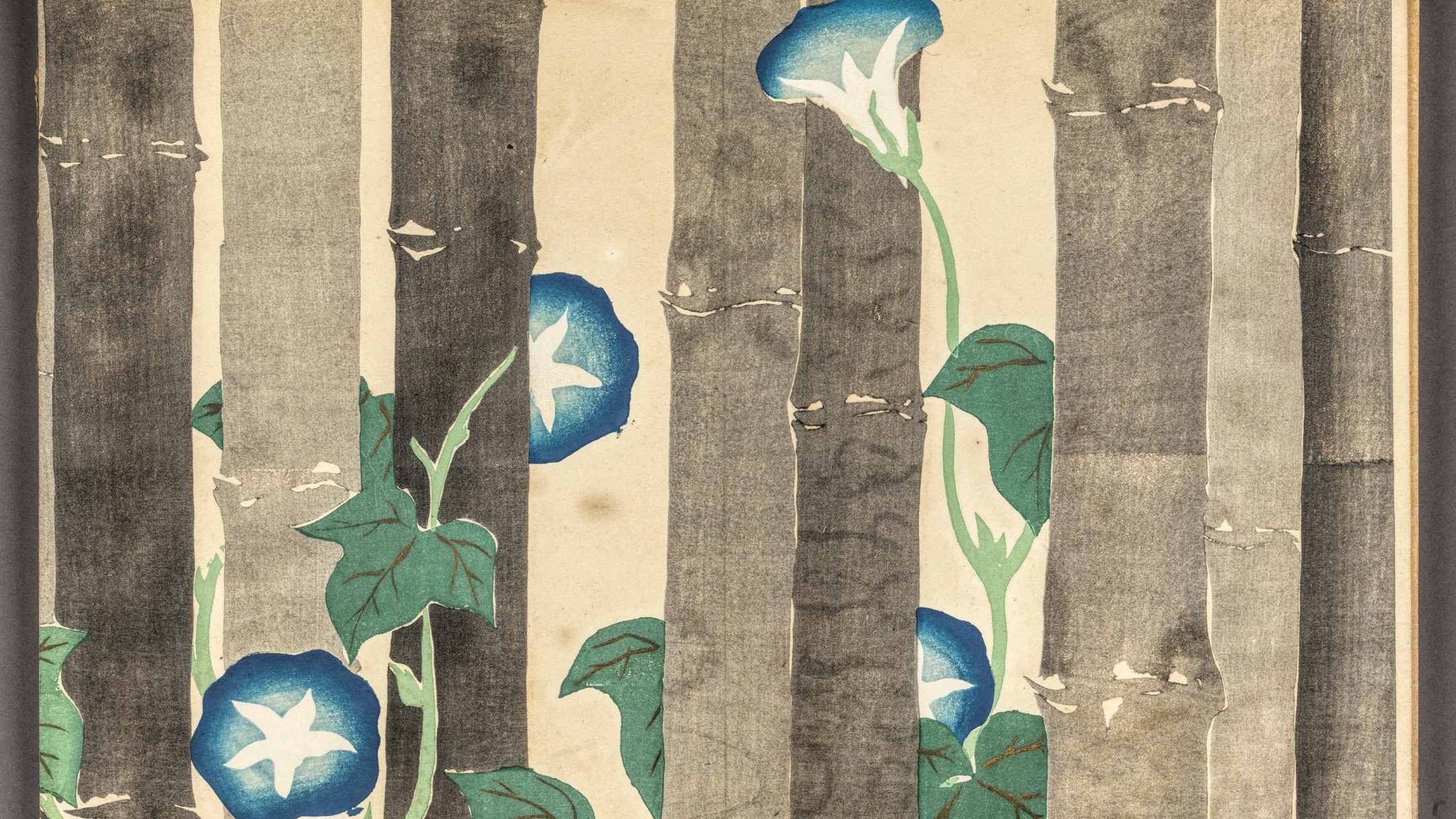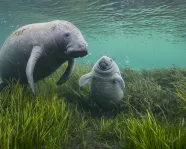Wildlife Photography
Published
Category
Author
one
Our sense of wonder is inextricably connected with nature. When we’re outside (even if we’re only sitting under a tree in a park, with our notifications switched off), our imagination switches on, and it’s easier to realize that anything and everything is possible—especially in those magical spaces where there is still more green than grey. Wildlife Photographer of the Year brings that outside awe inside.
Moving from one image to another—some whimsical, others unsettling, all of them powerful—in the hushed, gently lit rooms, I felt like I was at once floating and submerging. The gathering of mussels in Praia da Ursa, Sintra, Portugal, depicted by Theo Bosboom (the Netherlands) in Strength in Numbers immediately astounded me, even more so when I realized that they were saving each other from being swept away into the ocean. The photo is an urgent reminder that we all have a responsibility to care for each other.
Two
Do you remember the first time you entered a forest, even if you just stayed at the edges because (like me) you might have felt somewhat anxious being totally surrounded by wilderness? In the Spotlight by Shreyovi Mehta (India), revealing two Indian peafowl against a backdrop of trees in Keoladeo National Park in Rajasthan, India, conjures that reverent, fairy-tale feeling. Even more extraordinary? The photographer is only nine years old.
This featured quote by Tony Wu, photonaturalist and one of the contest judges, really struck me: “Be patient. Meeting an animal is just like meeting a person. It takes time to get to know each other, to bond, to trust …” And then Late Night Fishing, a startling shot by Geoffrey Reynaud (Canada), froze me to the spot as I gazed into the eyes of a grizzly bear hunting for salmon by an icy river in the Yukon and offering a playful smile to the hidden camera trap.
Surprising and heartening moments like these are plentiful at this year’s exhibition, which I visited just a few days after the death of a beloved pet. Poptart was a black bear hamster with reddish-black fur and a stripe of white on her belly and the sweetest, brightest spirit, who brought so much joy to me and my family. The grief of losing the animal friends who entrust us with their care can be shattering, and a number of wildlife photographers in this exhibition encourage us to extend that grief to the wildlife that has been destroyed by human-caused climate change and intrusion.
The people with the longest histories of living in harmony with the land have invaluable knowledge, and Indigenous voices must be centred in environmental stewardship.
Three
Two images in particular combine artful beauty with horror: In A Diet of Deadly Plastic, Justin Gilligan (Australia) has assembled a mosaic from the 403 pieces of colourful plastic found inside the digestive tract of a dead flesh-footed shearwater. Here at home, Patricia Seaton Homonylo has created a harrowing visual showing the 3,900 birds from 103 species that died after flying into windows in the Greater Toronto Area in 2022, with When Worlds Collide. When our hearts crack open with the anguish these disturbing images elicit, we have greater access to the fierce love that is necessary to power positive change, to challenge and disrupt the harmful systems that keep taking from nature when what we most need to do now is give back.
Humans are just as vulnerable to the consequences of the climate crisis, though certainly the impacts of environmental injustices are not felt equally. Indigenous, Black, racialized, low-income, unhoused, and other systemically marginalized communities face the worst of these disasters.
For this exhibition, three Indigenous Knowledge Holders from different Nations have recorded stories about relationships in the natural world.
Jason Picard-Binet, who is Wendat from Wendake, speaks about the importance of deer to his Nation: “Even nowadays, hunting for either Aoskway (moose) or Ohskënonton’ (deer) on our ancestral lands is an essential part of passing on our culture to Wendat youth … In addition to harvesting meat, we also teach the kids to respect the entire animal.”
Elizabeth Osawamick, who is Anishinaabe from Wiikwemkoong Unceded Territory, speaks about bears and their role in Clans: “The people who are of the Bear Clan, they are the ones that … knew about the medicines, they knew about different plants that were good for healing … So the bear is very important to us.”
Rosary Spence, who is Mushkego Cree from Fort Albany First Nation, shares teachings from water beings and the importance of protecting the water, inspired by a recent dream: “The beaver was talking to me and sharing with me all of the different medicines that come from deep beneath the earth, under the lakes, and under the streams and rivers, the deep roots that lie within these waterways … It’s communal; it’s not individual for these beavers.”
The people with the longest histories of living in harmony with the land have invaluable knowledge, and Indigenous voices must be centred in environmental stewardship.
Often, as I immersed myself in the photographers’ stunning work, I felt many emotions at once. At first glance, Dewdrop Flamingo by Jan Leßmann and Hermann Hirsch (Germany) made me grin when I saw what appeared to be a flamingo showering behind a frosted glass door. Then, I gasped with amazement when I realized that the distant flamingo, in one of Europe’s most important wetlands in Saintes-Maries-de-la-Mer, Camargue, France, had been photographed through dewdrops on a spider’s web.
These days, with increasing investments in fossil fuels, military technology, and policing over ecological conservation, food security, and affordable housing, and with mega-corporations hiding their environmental devastation behind greenwashing, it can be tempting to become cynical and lose hope. Engaging with our wild relations in these astonishing and galvanizing photographs is an opportunity to rekindle our innate understanding that our fates are closely interwoven with those of everyone and everything on this planet and that we have an obligation to protect our shared future.
Toward the end of my visit, Old Man of the Glen by Fortunato Gatto (Italy) completely enchanted me. This bewitching, otherworldly photograph of a gnarled old birch tree covered in pale “old man’s beard” lichens in Scotland’s Glen Affric ancient pinewoods is like a living Monet painting. I was left feeling profoundly grateful that places like this still exist—and an overwhelming desire to help ensure their preservation.
We all need more wonder in our lives right now. The collected images in this incredibly thoughtful exhibit remind us of that wonder we may have forgotten and reassure us that it’s easy to remember, if we only try.
Four
Jessica Westhead is a critically acclaimed author and editor based in Toronto
Five
Wildlife Photographer of the Year is developed and produced by the Natural History Museum, London.
This exhibition is generously supported by the Royal Exhibitions Circle.


